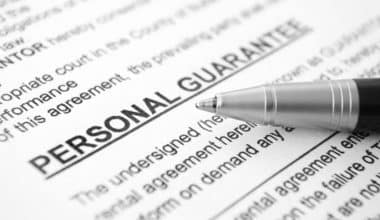In America, the average closing cost for a mortgage refinance is $4,345. These costs may differ based on the lender and the location of the mortgaged property. Furthermore, the quantity borrowed will influence the cost of the refinance of the mortgage. Refinances promoted with “no closing costs” or “no fees” frequently include those charges in the new mortgage’s interest rate, the amount borrowed, or monthly payments.
How Much Does It Cost to Refinance a Mortgage?
The closing costs for a mortgage refinance vary depending on the size of your loan and where you live in the state and county. According to ClosingCorp, the average refinances closing cost will be $2,375 (without taxes) in 2021.
The closing cost will typically range between 2% and 5% of the mortgage principal amount. The closing cost for a $200,000 mortgage refinance, for example, could range from $4,000 to $10,000.
Fees often included in refinancing closing costs include the following:
| CLOSING COSTS | FEE |
| Application fee | $75-$300 or more |
| Origination and/or underwriting fee | 0.5%-1.5% of loan principal |
| Recording fee | Cost depends on the location |
| Appraisal fee | $300-$400 (more for a larger property) |
| Credit check fee | $25 or more |
| Title services | $700-$900 |
| Survey fee | $150-$400 |
| Attorney/closing fee | $500-$1,000 |
How to Reduce the Cost of a Mortgage Refinance
- Improve your credit score
- Compare mortgage offers and rates.
- Negotiate closing costs.
- Request fee waivers.
- Determine whether to purchase mortgage points.
- Choose your original title insurer.
- Consider a no-closing-cost refinance.
#1. Improve your credit score
You’ll need to meet minimum credit score requirements to refinance, just as you did when you applied for your initial mortgage. The lower the interest rate you’ll qualify for when refinancing, the better your credit.
Work on improving your credit before trying to refinance to get the best rate possible. Check your credit report for mistakes at AnnualCreditReport.com. If you discover an error, you can challenge it by contacting credit reporting companies (Equifax, Experian, or TransUnion). Maintain your credit by paying all of your payments on time, keeping credit card balances well below the credit limit, and paying more than the minimum amount if possible.
#2. Compare mortgage offers and interest rates
Compare the refinance rates and terms offered by various banks and mortgage lenders. You could also consult with a mortgage broker to obtain a variety of options. It’s also a good idea to start with your current lender. As a returning customer, you may be eligible for discounts or special promotions that will significantly reduce your overall costs. In fact, several lenders provide free refinancing to customers. If your current bank or lender does not provide any savings options, it may be worthwhile to look for a new bank that does.
While rates and fees are important considerations, they are only the beginning. Make sure to examine the monthly payment with each offer, as well as the interest rate on the amount (either at the beginning or end of the month). Most mortgages compute interest towards the end of the month, which is more accurate, but it never hurts to double-check. Pay special attention to APR to gain a complete picture of your costs.
#3. Discuss closing costs.
As with your first mortgage, carefully examine the loan estimate from your lender to determine how the costs are broken down. Negotiating closing costs can help you save money, especially if you’ve shopped around and have more than one refinance offer in hand.
If some expenses, like as the application charge, underwriting fee, or rate lock fee, appear to be abnormally high, it’s worth contacting the lender to see if they may be reduced. Remember, the lender wants your business, so it may be willing to compromise if you demonstrate your willingness to reject the offer.
#4. Request fee waivers.
In the same spirit, inquire with your bank or lender about waiving or lowering the application or credit check charge. You can also find out if it will help you skip a new home appraisal or property survey if you’ve previously had one. Your lender may be eager to work with you, especially if you are a returning customer.
#5. Determine whether to purchase mortgage points.
Consider whether purchasing mortgage or discount points is worthwhile if you want to reduce your closing costs. While purchasing points lowers your interest rate, it is usually preferable when you expect to own the property for a long time and do not want to refinance — even to pay for a large remodel later on. To assess whether it’s advantageous to buy points when refinancing, use Bankrate’s mortgage refinance calculator.
#6. Use your original title insurer.
Many states control title rates, but you can try to reduce your title services costs by asking your current title insurance firm how much it would charge to renew the policy for your refinanced loan. This may be less expensive than starting anew with a new company or policy. Furthermore, if you didn’t get an owner’s policy the first time, consider acquiring one now.
#7. Think about a no-cost refinance.
Consider a no-closing-cost mortgage refinance if you’re short on funds. The term is a little misleading because this isn’t free; however, it does imply you won’t have to pay closing costs. Instead, your interest rate will be raised or the closing costs will be included in the new loan.
The benefit of a no-closing-cost refinance is that you don’t have to come up with thousands of dollars in fees at the loan signing, which can be especially important if you’re conducting a cash-out refinance. By avoiding upfront closing costs, you can pay for whatever you want immediately, such as a home remodel or a wedding. The disadvantage is that you may end up paying more throughout the life of the loan. In general, refinancing isn’t worth it if you can’t cover the closing costs upfront or over time.
What is the average cost to refinance a home loan?
According to ClosingCorp, the average refinances closing cost will be $2,375 (without taxes) in 2021. The closing cost will typically range between 2% and 5% of the mortgage principal amount. The closing cost for a $200,000 mortgage refinance, for example, could range from $4,000 to $10,000.
Do you get charged for refinancing?
Closing costs should range between 2 and 6% of the loan balance. Depending on your lender’s criteria, you may be allowed to roll your closing costs into your loan balance. You may also be able to get a no-closing cost to refinance a mortgage, which means you won’t have to pay any closing costs upfront.
Reasons to Refinance Your Mortgage
There are various reasons to consider refinancing your mortgage:
#1. Reduce your interest rate.
A loan with a lower mortgage rate lowers your monthly mortgage payment as well as your total interest costs throughout the life of the loan. If your credit has improved since you took out your current loan, you may be able to refinance and earn a cheaper interest rate. Your monthly savings are determined by your new interest rate and the cost of refinancing into a new loan. To properly estimate your bottom line, use a refinance cost calculator.
#2. Change the term of your loan.
You can pay off your mortgage faster if you have a shorter term, or you can extend your term to earn a cheaper monthly payment. There are trade-offs in any option. If you can afford a considerably larger monthly payment, refinancing from a 30-year to a 15-year mortgage could help you lock in a lower rate and save on interest costs. Extending the length of your loan, on the other hand, would reduce your monthly payment but cost you more in interest throughout the life of the loan.
#3. Utilize your home equity.
With a cash-out refinance, you can better your loan conditions while also gaining access to your accessible home equity. You’ll take out a new mortgage for a higher amount than you presently owe and use the difference in cash to fund other financial goals, such as home improvements or college costs. Use our cash-out refinance calculator to crunch the figures and see if this option makes sense for you.
#4. Convert an ARM to a fixed-rate mortgage.
An adjustable-rate mortgage (ARM) is a loan with a low, initial fixed rate that increases based on the parameters of the ARM you pick. A portion of your ARM payment is based on an “index,” which is a benchmark rate that fluctuates based on market factors, making your payment unaffordable if interest rates rise over time. Converting your ARM to a fixed-rate loan provides you with the security of a fixed monthly payment.
#5. Convert an FHA mortgage to a standard mortgage.
If you have a Federal Housing Administration (FHA) loan and made less than a 10% down payment at closing, you will be required to pay mortgage insurance premiums for the life of your loan unless you refinance into a conventional loan. You won’t have to pay private mortgage insurance on your new loan if you have at least 20% equity when you refinance.
Steps to Reduce the Cost of Your Mortgage Refinance
Step #1: Raise your credit score.
A credit score of at least 740 will usually offer you the best interest rate and costs, and it may even make the refinance approval process quicker. Pay your bills on time, pay down or pay off your credit card balances, and challenge any credit report inaccuracies you find to improve your score.
Step #2: Consult with many lenders.
You won’t know if you’re getting the best refinance price unless you browse around. Apply for a loan from three to five different lenders and compare their refinance fees.
Step #3: Negotiate your refinance costs.
Don’t be frightened to negotiate a better offer. Some of the fees connected with refinancing can be negotiated. Some fees, particularly application or origination fees, may be reduced or waived by a lender.
Step #4: Think about a no-closing-cost refi.
If you don’t have the means to pay the whole refinance cost upfront, talk to your lender about a no-closing-cost refinance. Don’t be deceived by the word; your lender will either charge you a higher interest rate or add the closing costs to your new loan total, spreading your closing costs paid over the length of your loan.
Is It Possible to Refinance Without Incurring Closing Costs?
There is an option to refinance a mortgage with no closing cost.
If you need to refinance a mortgage but don’t have a lot of money to cover closing costs, no-closing-cost refinancing may be an option. However, you should evaluate how such a loan can affect the amount you pay in the long run.
Even if the difference in rates is just fractional, a higher interest rate equals more interest paid over the life of the loan.
Assume you refinance a $200,000 mortgage to a 15-year term. You might pay 4% with $4,000 in out-of-pocket closing costs, or 4.25% with a lender credit for closing costs.
If you accept the higher rate, you’ll keep your $4,000 for closing but pay around $4,500 more in interest at the higher rate, for a total cost of $500 more.
Another option is to have the closing costs included in the loan instead of paying a higher interest rate. In that situation, your interest rate may not rise, but adding closing costs to the loan results in a larger loan amount. This could result in higher monthly payments, as well as interest on the closing costs over time.
Why are closing costs so high on a refinance?
Refinancing entails taking out a new loan to replace your old one, which means you’ll have to pay back a lot of mortgage-related expenses.
Conclusion
When you refinance, you pay off your existing mortgage and take out a new loan. You can refinance to adjust your interest rate or mortgage term, consolidate debt, or withdraw cash from your equity.
Applying for a refinance is similar to purchasing a property. You apply to your lender, go through appraisal and underwriting, and attend a closing meeting.
When you refinance, you must pay closing costs, just like you did when you took out your initial loan. Closing costs may include appraisal fees, attorney fees, and title insurance fees.
Closing costs are typically between 2 and 6% of the refinance’s value. If you’re having difficulties making your payments, need cash, or want to get rid of PMI, a refinance may be a suitable alternative.
Related Articles
- COST TO REFINANCE A MORTGAGE: All You Need to Know
- RATE AND TERM OPTION: Explained
- MORTGAGE RATES FOR INVESTMENT PROPERTY: Current Mortgage Rates for Investment Property
- Cash-out refinance loan explained (+ requirements and tools)
- WHEN SHOULD YOU REFINANCE YOUR CAR? Is It Ever a Good Idea to Refinance Your Car?






